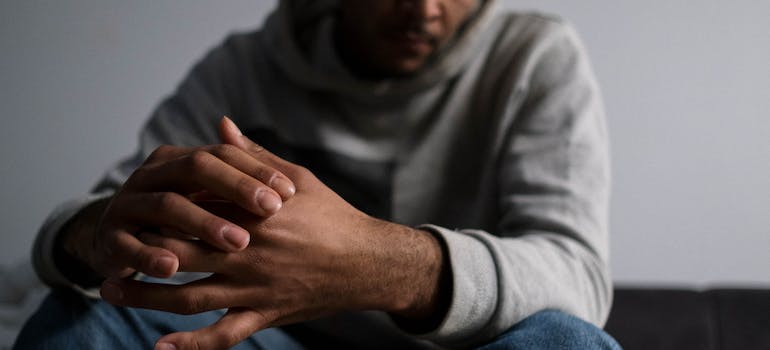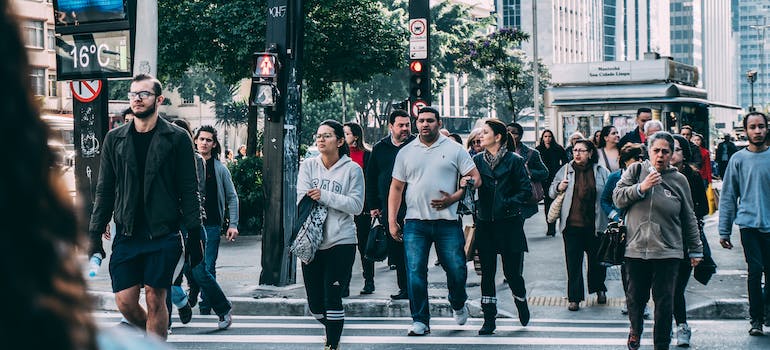What You Should Know About Overdose Crisis in NY
New York faces a serious challenge with the overdose crisis, and it’s crucial to pay attention. Understanding and dealing with this issue is really important. Little Creek Recovery will discover how big the problem is, what causes it, and how it affects communities. We’ll also check out how the government, local efforts, and available treatments are dealing with the overdose crisis in NY. We want to not only make people more aware but also contribute to the ongoing conversation about how we can make New York safer and healthier in the future.
Jump to Section
What is the overdose rate in NYC?
The number of overdoses in New York City has gone up a lot in recent years, showing how serious the situation is. The stats tell us that fatal overdoses are on the rise, especially in certain parts of the city. These numbers not only show us how big the problem is but also highlight the need for quick and effective action. When we look at the overdose crisis in NY, it’s clear that this isn’t just about numbers—it’s a real and serious issue that’s affecting individuals and their families.

More than 3,200 deaths due to drug overdose are estimated to have occurred in New York City during the 12 months ending in April of 2023. Fentanyl was detected in 81% of drug overdose deaths in New York City, according to the data. Fentanyl is an opioid that is 50 to 100 times stronger than morphine, the department states. The report found that Black and Latino New Yorkers had the highest rates of overdose death and the largest increases in rate from 2021 to 2022.
Root Causes
The increase in overdoses in New York is connected to many different things. One big reason is that there are more powerful and dangerous drugs available on the streets. Synthetic opioids, which are stronger than regular drugs, are a major part of why overdoses are more deadly now. Also, issues like not having enough money and not being able to get good healthcare make it harder for some people, and they might turn to drugs to cope.

When mental health problems mix with drug use, it makes the overdose crisis in NY even worse. To really solve this problem, we need to understand and tackle these root causes, going deeper than just surface-level fixes.
What are the three waves of the overdose crisis in NY?
The overdose crisis in NY has happened in three big waves, each bringing its own challenges. The first one was in the 1990s, and it happened because there were a lot of prescriptions for opioids. This led to more people overdosing on opioids. The second wave happened in the 2000s, and it was about more overdoses related to heroin. This was because rules about opioid prescriptions became stricter, so people turned to heroin instead. The third wave started in the 2010s and is the most serious. It’s all about synthetic opioids, especially fentanyl. These drugs are really strong, and they’ve made overdoses much more dangerous. Following the third wave, it is really important to go to opioid treatment programs and treat addiction as soon as possible.
Impact on Communities
The impact of the overdose crisis is deeply felt in communities across New York. Families are dealing with the heartbreaking loss of loved ones, and neighborhoods are experiencing the emotional weight of seeing this devastation up close.

Besides the sadness of losing lives, communities are also facing extra pressure on healthcare and emergency services, making it tougher for first responders and medical facilities. The NY overdose crisis is also affecting the social and economic health of neighborhoods, with less productivity and challenges in people coming together. As we look at how communities are impacted, it’s clear that dealing with this crisis needs more than just medical help.
What factors contribute to the alarming rise in overdoses?
- Potent Synthetic Opioids: The influx of potent synthetic opioids, particularly fentanyl, has significantly increased the lethality of drug use.
- Illicit Drug Market Dynamics: Shifts in the illicit drug market, with the availability of more dangerous substances, contribute to heightened risks of overdose.
- Socioeconomic Challenges: Poverty and lack of access to quality healthcare create a cycle of vulnerability, where some may turn to substance use as a coping mechanism. Money shouldn’t be a reason to not get needed treatment, luckily Blue Cross Blue Shield drug rehab coverage can cover most of the cost.
- Mental Health Intersections: The interconnected nature of mental health issues and substance abuse amplifies the complexity of the crisis.
- Prescription Opioid History: The first wave of the crisis, marked by an increase in opioid prescriptions in the 1990s, laid the groundwork for subsequent waves.
- Heroin Resurgence: Stricter regulations on prescription opioids in the 2000s led to a resurgence of heroin use, contributing to the second wave of the crisis.
- Accessibility and Availability: The ease of access to illicit substances and their widespread availability in communities exacerbate the risk of overdoses.
- Stigma and Barriers to Treatment: Social stigma surrounding addiction and barriers to seeking treatment contribute to delayed or inadequate intervention.
- Limited Harm Reduction Measures: Insufficient harm reduction measures, such as access to naloxone, further increase the risk of fatal overdoses.
- Systemic Inequities: Systemic inequities in healthcare, education, and employment create conditions that disproportionately impact vulnerable populations, contributing to the crisis.
Stigma Surrounding Addiction
The way people look at addiction creates big barriers to getting help and keeps people feeling ashamed and isolated. To break these barriers, we all need to work together to understand and be more empathetic. That means getting rid of preconceived ideas that say people with addiction are bad instead of dealing with a tough health issue. Education about how addiction affects the brain can really help challenge these wrong ideas.

If we can show that people struggling with addiction are just like anyone else dealing with a health problem, we can change how society sees them. This opens the door for more honest conversations and makes it easier for folks to ask for help without worrying about being judged. Getting rid of the stigma around addiction is a really important step in getting help at Binghamton rehab center.
What are the dangers of the Overdose Crisis in NY?
The opioid crisis is a serious and complicated problem that goes way beyond the risk of overdoses. Using drugs through injections spreads diseases, making public health challenges even tougher. Money-wise, the crisis costs a lot with higher healthcare bills, less work getting done, and lots of problems in society because of addiction. Kids in families affected by addiction also face a tough time with stability and safety. Besides the immediate dangers, the crisis also has long-term effects on health, affecting how organs work and how well people can think. To tackle the opioid crisis, we need to understand and deal with all these dangers, creating plans that cover everything and help society deal with the big impacts.
What should you do in case of an overdose?
- Call Emergency Services Immediately: Dial 911 or your local emergency number for immediate assistance.
- Administer Naloxone (if available): If you have access to naloxone, administer it following the provided instructions. Naloxone can reverse the effects of opioid overdose.
- Stay Calm and Assess the Situation: While waiting for emergency services, stay calm and assess the person’s breathing and responsiveness.
- Perform Rescue Breaths: If the person is not breathing, start rescue breaths. Tilt their head back slightly, lift the chin, and give one breath every 5 seconds.
- Monitor Vital Signs: Keep a close eye on the person’s vital signs, including pulse and breathing.
- Do Not Leave the Person Alone: Stay with the person until emergency services arrive, providing reassurance and support.
- Provide Relevant Information to Emergency Responders: When help arrives, provide information on the substances involved, if known, and any other relevant details about the situation.
- Encourage Professional Help and Treatment: After the immediate crisis is addressed, encourage the person to seek professional help and treatment at a drug rehab near Middletown, NY.
- Dispose of Drug Paraphernalia Safely: If applicable, safely dispose of any drug paraphernalia to prevent further harm.
- Reach Out to Support Services: Connect with local support services and addiction helplines for guidance on long-term recovery and assistance for both the person and their loved ones.
Impact on Mental Health
The connection between using opioids and mental health is pretty complicated, and we need to look at it carefully. People dealing with mental health problems often turn to drugs as a way to cope, and this creates a cycle where one affects the other. Using opioids can make mental health issues worse, and mental health problems can lead to the use of substances.

To really tackle this complex situation, we need to take a full approach. That means breaking down the barriers between mental health and addiction services and making sure they work together. We also need to focus on getting rid of the stigma around these issues.
What support systems exist for families affected by the NY overdose crisis?
Families going through overdose situations can find help in different ways. Talking to someone in grief counseling or therapy gives them a safe space to share their feelings and deal with the deep loss of a loved one from an overdose. Support groups made for those affected by overdoses create a feeling of community, letting people connect with others who understand what they’re going through.

Organizations and groups focused on substance use disorders provide resources and counseling to help families after an overdose. Hotlines and helplines are there for immediate support, giving information, resources, and a caring ear when things are tough. Families can also get help with legal and financial stuff through counseling services.
What treatment options are available for those battling addiction in NY?
Drug rehab in Newburgh NY offers a range of treatment options for people battling addiction, ensuring a diverse and comprehensive approach to recovery. Some of the prominent treatment options include:
- Inpatient Rehabilitation Centers: Inpatient programs provide a structured and immersive environment for people to focus on their recovery. These programs often include medical detoxification, therapy, counseling, and support groups.
- Outpatient Treatment Programs: Outpatient rehab PA offers flexibility for people to receive treatment while continuing with daily life. They typically include counseling, therapy sessions, and support group meetings.
- Medication-Assisted Treatment (MAT): MAT combines medication with counseling and behavioral therapies to address substance use disorders.
- Partial Hospitalization Programs (PHP): PHPs provide a higher level of care than outpatient programs, with individuals spending a significant portion of their day in treatment. This allows for intensive therapy and support while still returning home in the evenings.
- Counseling and Therapy: Individual and group counseling sessions, including cognitive-behavioral therapy (CBT) and motivational enhancement therapy (MET), play a crucial role in addressing the psychological aspects of addiction.
- Family Therapy: Involving families in the treatment process through family therapy helps repair relationships and provides a supportive environment for recovery.
These treatment options reflect the diverse and evolving landscape of addiction recovery in New York, allowing people to find a personalized approach that aligns with their needs and circumstances.
The opioid crisis in New York is a big and urgent problem that needs everyone’s attention and many different solutions. We need to tackle this problem in a complete and team-focused way. Families dealing with the aftermath of the overdose crisis in NY need strong support, and people fighting addiction need different ways to get help. As New York deals with this tough situation, making sure there’s no judgment, educating people, and community initiatives can make a real difference. Sharing stories of success, making new laws, and understanding addiction with compassion can help us move towards a safer and healthier future for everyone in New York. The path ahead is hard, but if we all work together, there’s hope for recovery, strength, and a better tomorrow.